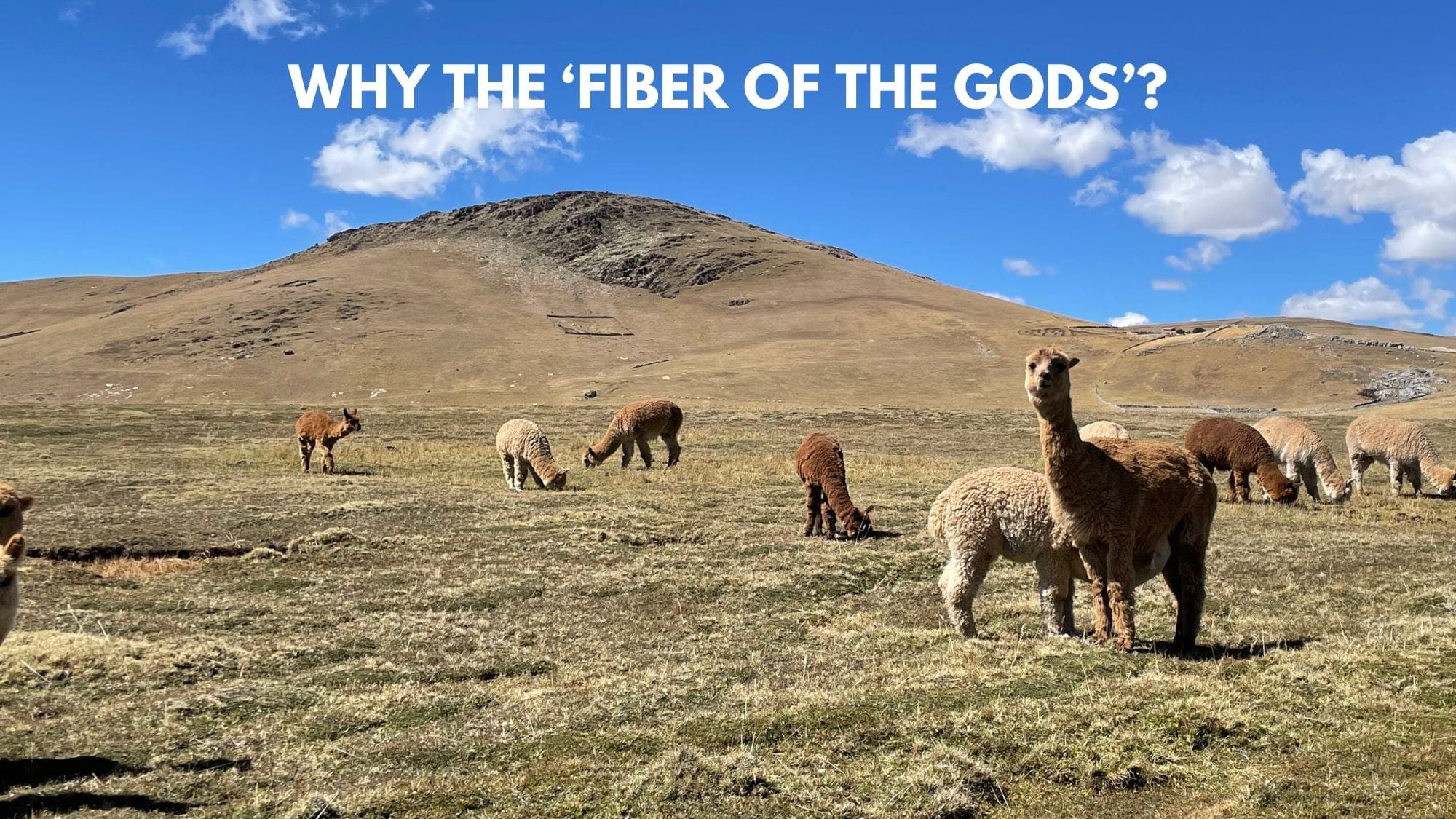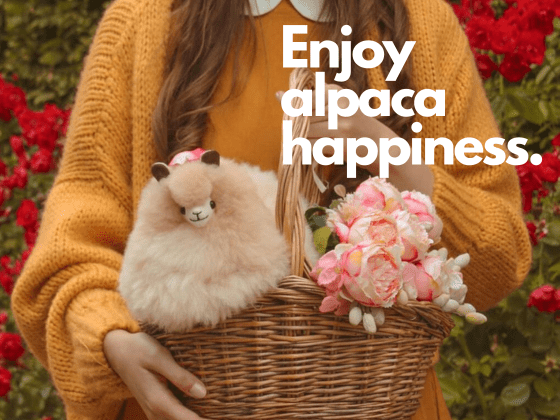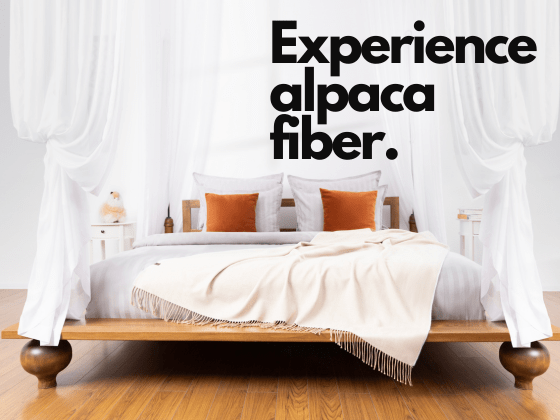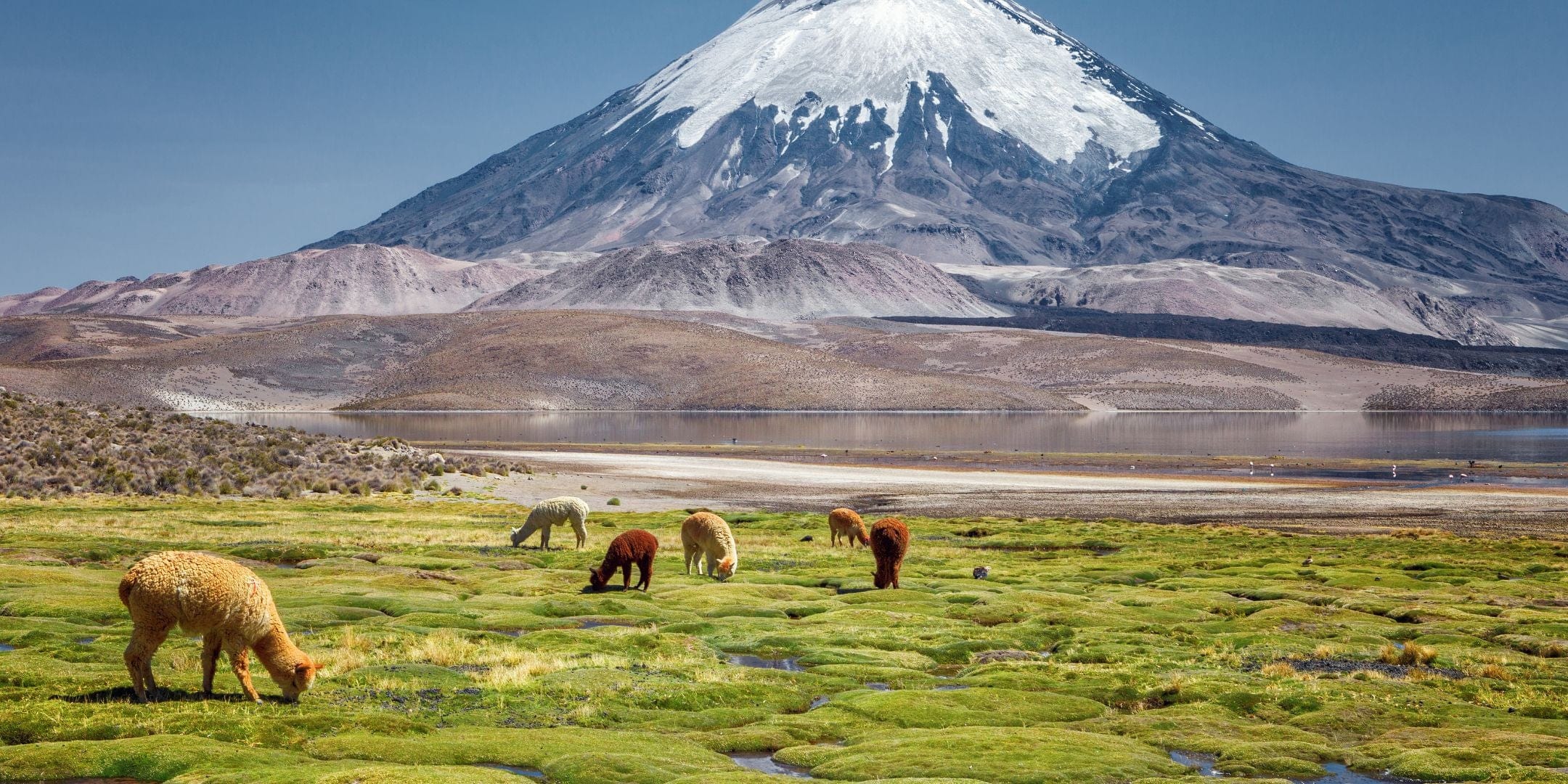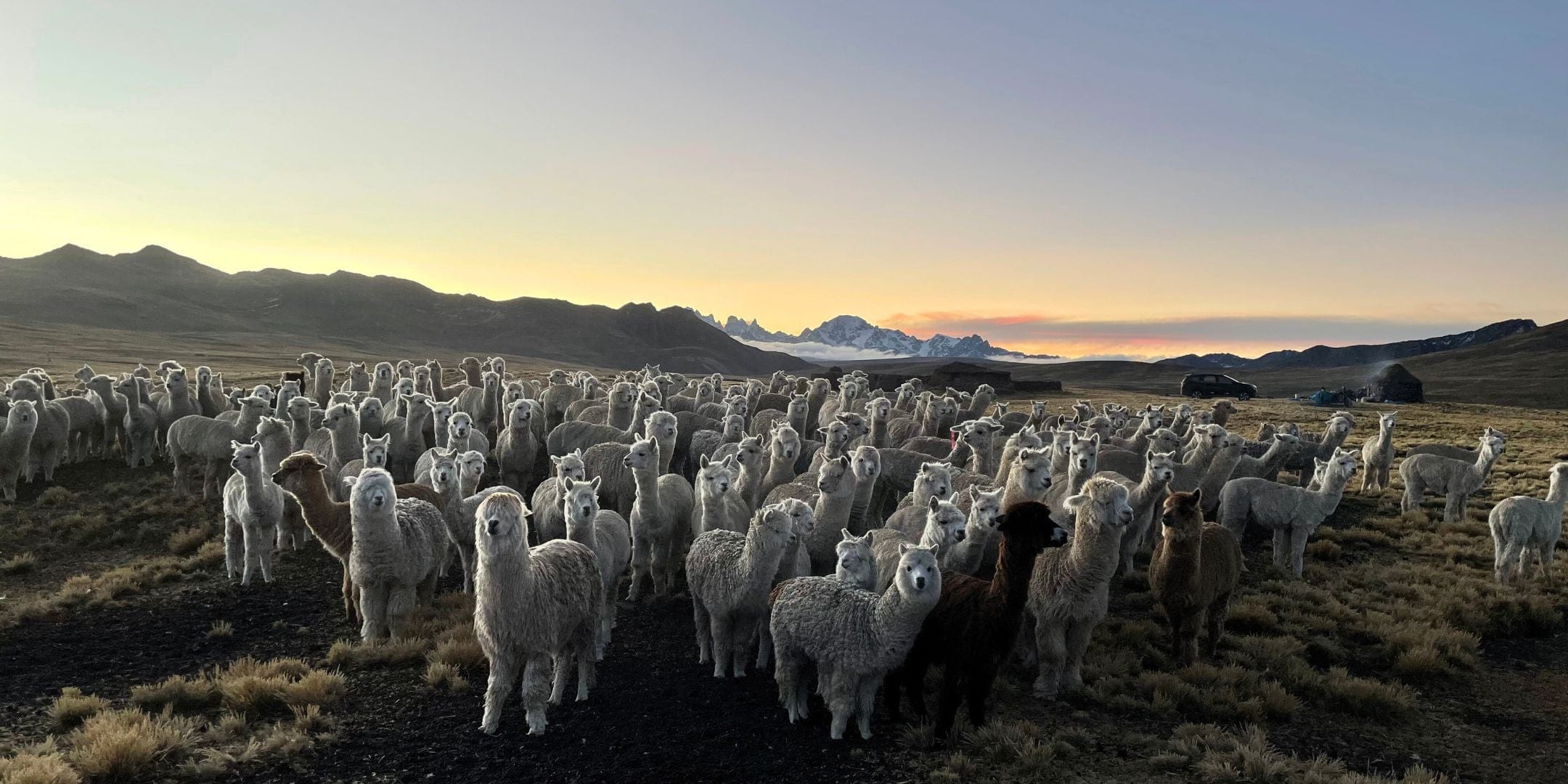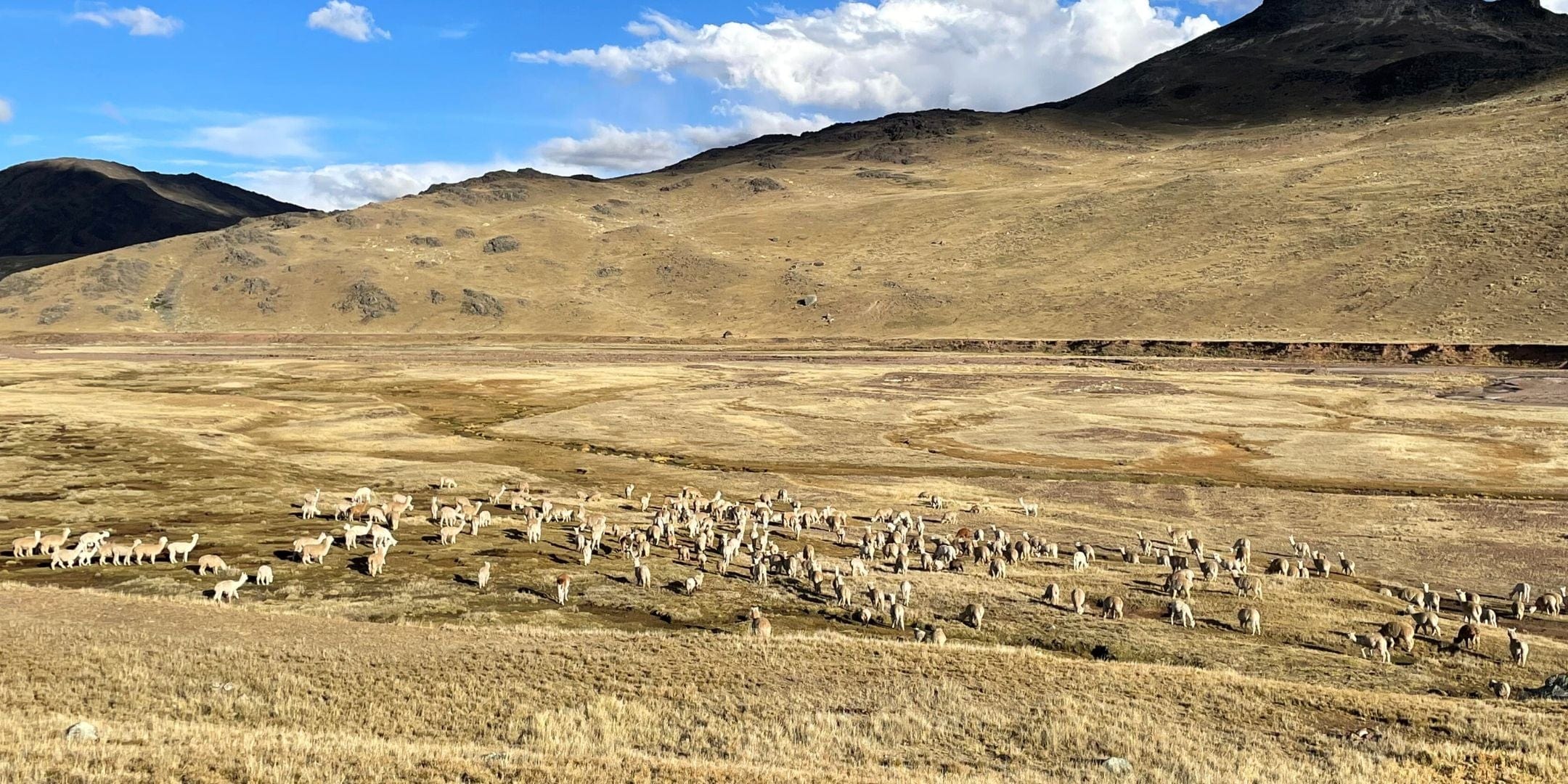We simply love alpacas and everything they stand for.
WHAT MAKES ALPACAS SUSTAINABLE?
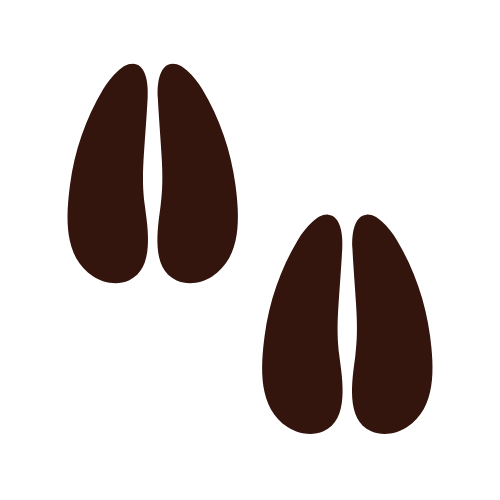
SOFTLY-PADDED HOOVES REDUCE DAMAGE TO THE SOIL.

EXTREME CLIMATES REQUIRE ALPACAS TO BE EXTREMELY WATER- AND FOOD EFFICIENT.

ALPACAS PLUCK AND NIBBLE ON GRASS, LEAVING THE ROOTS AND SOIL INTACT.

ALPACAS LOVE TO EAT NATIVE PLANTS - NO NEED FOR MONO-CROPS.

PREMIUM WOOL QUALITY MAKES IT POSSIBLE TO REMAIN CHEMICAL-FREE.

WOOL YIELDS ARE THE PRIMARY SOURCE OF INCOME FOR MOST SMALL ALPACA BREEDERS.
THERMO-REGULATING
Alpaca fiber is lightweight yet offers superior warmth in cold conditions and breathability in warmth, making it an ideal material for year-round wear. Its unique hollow structure allows air circulation while maintaining heat, ensuring comfort without overheating. Cool alpacas - happy alpacas.
SOFT AS CASHMERE
Softness of a fiber is measured in microns; the smaller the micron, the finer and softer the wool. Good quality alpaca typically has a thickness ranging from 18-23 microns, while most cashmere fibers fall at 19 microns.
PERFECT HARMONY
Alpacas roam the Andean Highlands together with their alpaca breeders (= alpaquero) and follow the availability of grass through the mountains. A healthy environment equals a healthy herd equals a healthy alpaquero. This mutually beneficial relationship is a perfect example of sustainable alpaca farming.
"Alpacas are way more than 'just' these cute and fluffy animals. They provide thousands of individuals financial stability and livelihood, are thé sustainable and chemical-free alternative to mass industries, and are an everyday reminder for me to be more in touch with Nature."
Daniel - Founder
